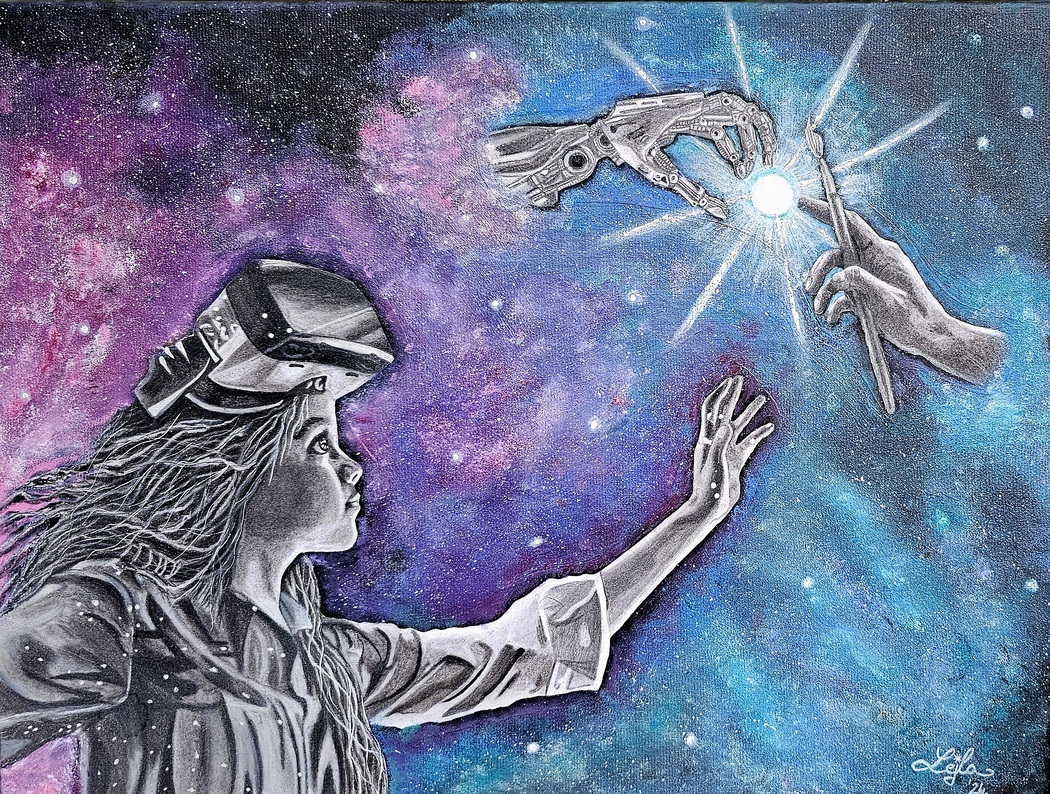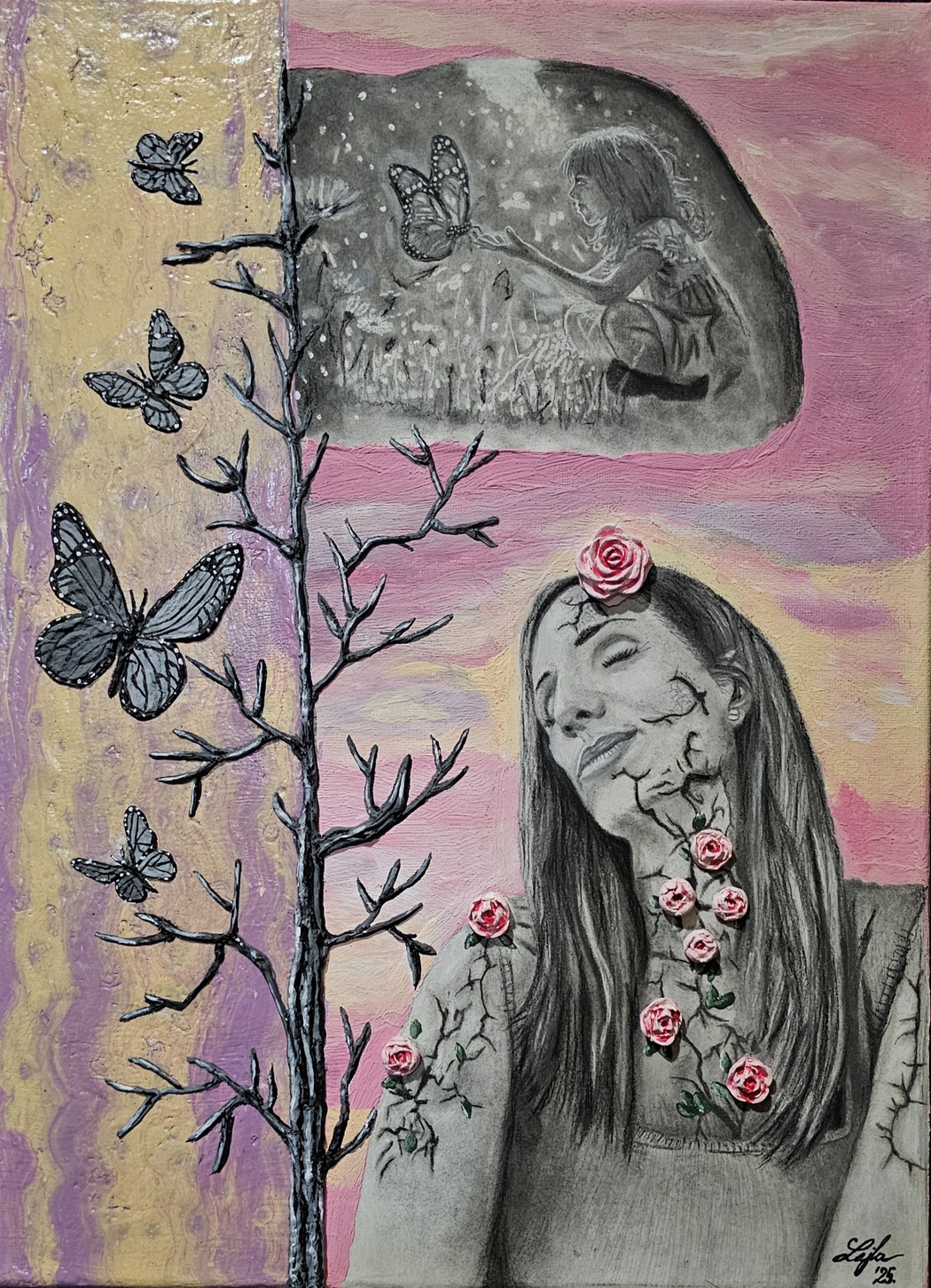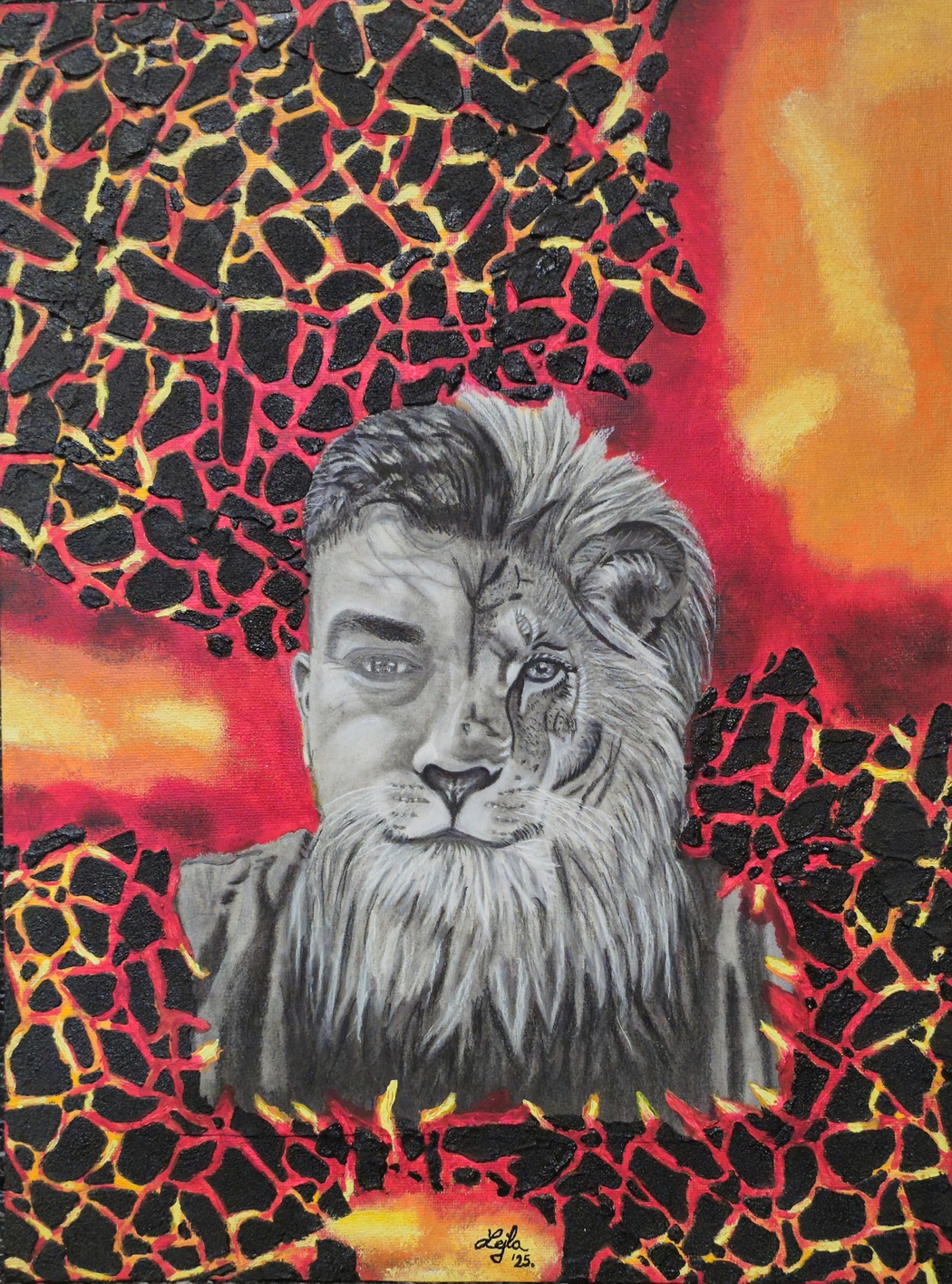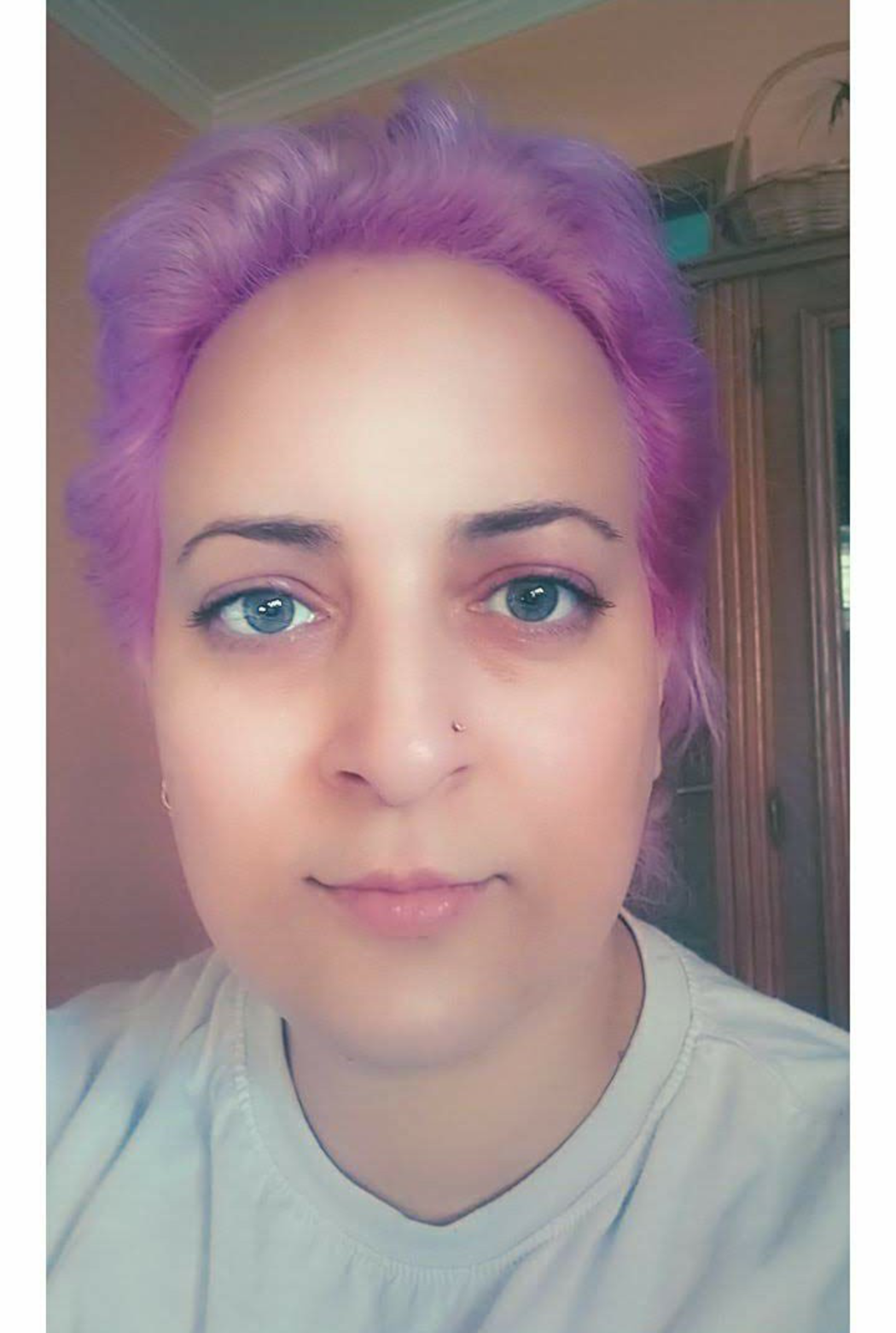Lejla Naser Ćopić
Year of birth: 1978.
Where do you live: Republic of Serbia.
Your education: Specialist vocational educator – for art education.
Describe your art in three words: Symbolic, Textured, Soulful.
Your discipline: Mixed media art.
Instagram
Can you tell us about your early connection to art and how it shaped your creative voice?
From my earliest memories, art was simply how I understood and interacted with the world. My earliest memories are filled with the joy of creating, whether it was scribbling on scrap paper or trying to replicate the vibrant colors of my grandmother’s garden. My parents nurtured this from the start; they never batted an eye at my messy hands or the piles of drawings covering some surface. This early freedom, this encouragement to simply create without judgment, profoundly shaped my creative voice. I wasn’t just drawing; I was observing, feeling, and translating. It was a language, a form of communication that preceded words. My childhood was filled with exploring different mediums – crayons, watercolors, pencils, anything I could get my hands on.
This early immersion allowed me to develop an intuitive understanding of color, form, and composition. It shaped my creative voice by making me unafraid to experiment and to see the beauty and potential in everyday materials. Art wasn’t just about replicating what I saw, but about expressing what I felt and what I imagined. Art wasn’t just about technical skill, but about expression, exploration, and finding a unique way to tell a story. It taught me that art is a language, and the more I practiced, the more fluent I became in speaking my own truth through lines, colors, and textures. It gave me permission to be playful, to experiment, and to trust my own intuition, which are all things I lean heavily on now.
After a long break from art, what inspired you to return to creating?
The return to art after two decades wasn’t a sudden decision; it was a slow, persistent pull. Life took its turns, as it does, and while I never stopped appreciating art, the act of making it took a backseat. However, the urge to create never truly disappeared. It was like a dormant seed, waiting for the right conditions to sprout. The inspiration ultimately came from a deep personal need to express myself again, to reconnect with that fundamental part of who I am. It was a yearning for something authentic, something that felt uniquely mine.
The quiet moments made me confront that missing piece. I started with simple sketches, just to get my hand moving again, and gradually, the passion reignited. It felt like coming home. The world had changed, I had changed, but the joy of creating was just as potent as ever. It was a whisper that grew into a roar, a realization that it was time to pick up my tools again.
 Lejla Naser Ćopić | The brush of hope | 2024
Lejla Naser Ćopić | The brush of hope | 2024
How did your experience as a kindergarten teacher influence your current artistic practice?
My years as a kindergarten teacher profoundly influenced my artistic practice in unexpected ways. Working with young children, I witnessed firsthand the uninhibited joy and fearless experimentation they bring to art. They don’t worry about perfection; they simply create from a place of pure imagination and emotion.
This profoundly influenced my current artistic practice. It reminded me that art is about the process, about discovery, and about embracing imperfection. It taught me the power of storytelling through visuals and the importance of fostering creativity without stifling it with rigid rules. It instilled in me a deep understanding of symbolism, as children often express complex ideas through simple, symbolic representations. This experience also honed my ability to observe and understand individual personalities, which is invaluable.
Why did you choose mixed media as your primary form of expression?
I chose mixed media as my primary form of expression because it offers an unparalleled freedom and depth. For me, it’s the most authentic way to tell a story. While I adore traditional drawing and painting, mixed media allow me to build up layers and create sculptural elements that literally pop off the canvas. It provide a unique way to incorporate the symbolic details that are so crucial to my portraits. It’s about creating a rich, immersive experience for the viewer, where they can discover new details with every look.
For me, a portraits aren’t just about capturing a likeness; it’s about delving into the layers of a person’s story, their dreams, their past, and their unique essence. Mixed media allows me to create a truly immersive and tactile experience for the viewer, extending the portraits beyond a simple rendering into a symbolic realm. It’s about building a world around the persons, not just depicting them.
 Lejla Naser Ćopić | Memory | 2025
Lejla Naser Ćopić | Memory | 2025
Your portraits are rich in texture and symbolism – how do you choose the materials and motifs for each piece?
Choosing materials and motifs for each piece is a highly intuitive and personalized process, deeply connected to the individual I’m portraying. When I receive a commission, I spend time talking with the person, learning about their life, their passions, their significant memories, and their aspirations. These conversations are crucial. The materials I choose for the background are not arbitrary; they are selected to extend the narrative and symbolism. For example, if someone has a strong connection to nature, I might use textured modeling paste to evoke tree bark or rippling water. The motifs are directly drawn from their stories – a specific flower, an animal, a significant object, or even an abstract representation of a feeling or experience. It’s about finding visual metaphors that resonate deeply with who they are.
What does the process of combining realism with abstract or symbolic elements look like for you?
The process of combining realism with abstract or symbolic elements is where the magic truly happens for me. The realism in my portraits, primarily executed with graphite and charcoal for the figure, serves as the anchor. It grounds the piece and captures the tangible essence of the person. However, life isn’t just about what’s visible; it’s also about dreams, memories, and inner worlds. This is where the abstract and symbolic elements come in.
I always start with the portrait, focusing on capturing the individual’s likeness and expression. Once the drawing is established, I move to the background, allowing the symbolism to emerge organically. The background is built up in layers, using the various mixed media materials to create textures and forms that subtly or overtly relate to the subject’s story. It’s a dance between the concrete and the conceptual, where the realistic portrait invites the viewer in, and the symbolic background expands the narrative, inviting contemplation and deeper understanding.
 Lejla Naser Ćopić | Brave heart | 2025
Lejla Naser Ćopić | Brave heart | 2025
How do you approach capturing someone’s essence in a commissioned portrait?
Capturing someone’s essence in a commissioned portrait is both a privilege and a challenge. It goes beyond just getting a good likeness. For me, it’s about connecting with their spirit. This begins with active listening and open communication with the client. I ask questions about their values, their triumphs, their struggles, and what makes them uniquely them. I try to understand what makes them unique, what their inner world looks like, and what stories they carry.
Then begins a process of translation – taking those conversations and observations and distilling them into visual form. It’s about finding the balance between realistic representation and the symbolic elements that illuminate their inner world, creating a piece that truly resonates with who they are.


Leave a Reply